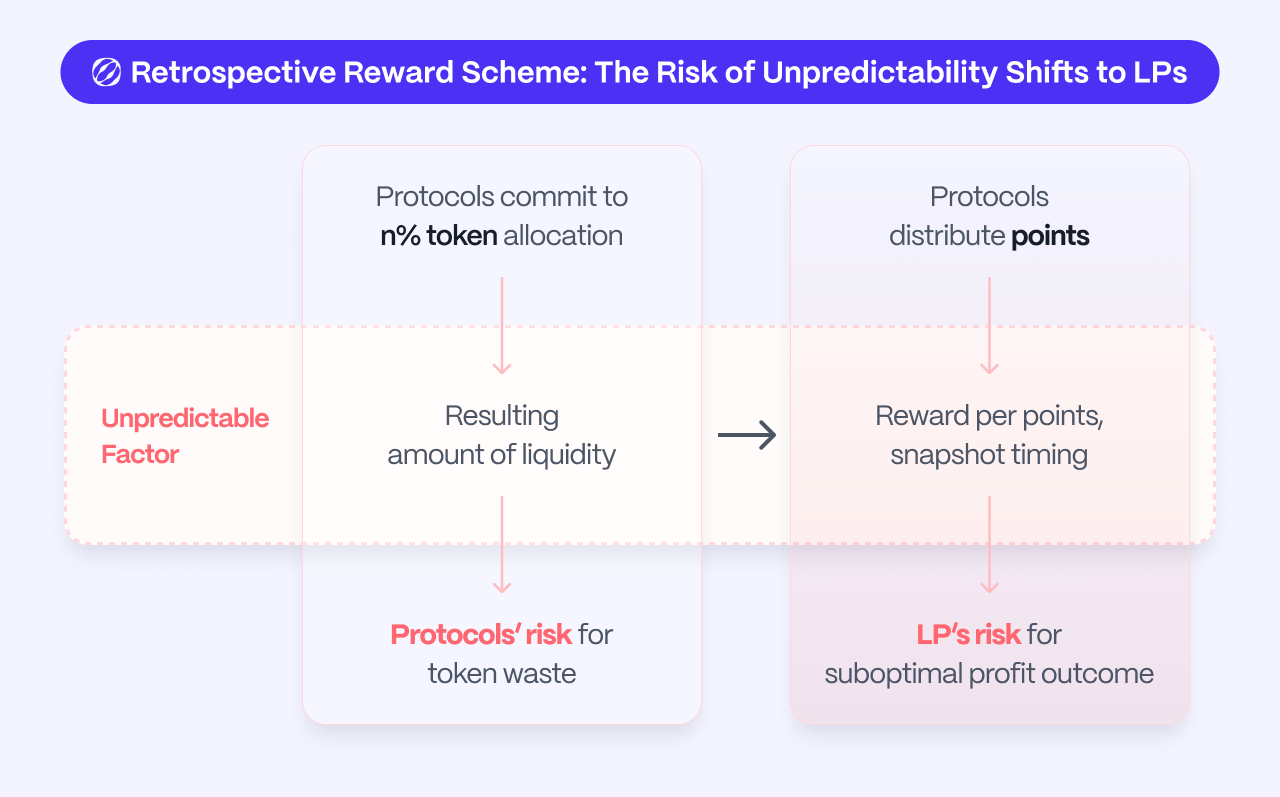Background
The Multi-Chain Transition
Both blockchain networks and decentralized finance (DeFi) apps depend on deep initial liquidity to succeed. Conversely, insufficient initial liquidity leads to a downward spiral for both types of protocols. After securing the initial liquidity, sustaining substantial liquidity through organic yield or real use cases is vital for a protocol’s survival.
The importance of deep liquidity creates a competitive environment where protocols constantly fight for liquidity and LPs struggle to keep up. Although competition is inherent in the DeFi landscape, the multi-chain transition is intensifying it.
For LPs, the multi-chain transition has created an overload of choices for asset allocation. The increase in opportunities makes it harder for protocols to attract LPs. As a result, protocols offer increasingly enticing rewards for the initial liquidity. This makes maintaining liquidity challenging, as LPs are incentivized to move their assets as soon as they find more rewarding opportunities.
Increased Dependence on Institutional Liquidity
Protocols often turn to the private market to secure initial liquidity. Institutions offer greater stability for a larger volume of liquidity through legal contracts. In the current status quo, their liquidity plays a crucial role in the blockchain landscape, buying time for protocol builders until their products start attracting organic liquidity.
Excessive reliance on institutional liquidity might not always be the healthiest for the market. Centralization risk arises when a single stakeholder can decide on the maintenance of a significant proportion of liquidity. Additionally, if the rewards for the liquidity are in governance tokens, a few entities can dominate the governance decisions or sway the token price.
Point Reward System
The point reward system is a new approach that has become popular when bootstrapping initial liquidity. During the early launch phase, when organic yield is insufficient, protocols often distribute their native tokens to incentivize LPs.
The simplest way to attract LPs is by announcing a distribution of n% of tokens. Yet, committing to a fixed n% can be risky because if less liquidity is supplied than expected, tokens are underutilized. For instance, if only 1m is gathered instead of 10m, the protocol spends the announced 10% of tokens on just the 1m. Conversely, not committing to a percentage for token allocation fails to generate profit expectations for LPs, resulting in insufficient liquidity supply.

The point reward system has emerged as a tool in this context. Instead of actual yield, protocols distribute points, indicating a promise of future token allocation. LPs can project their profit expectations onto the points. In this way, protocols induce anticipation of returns in LPs without committing to a fixed token allocation percentage.